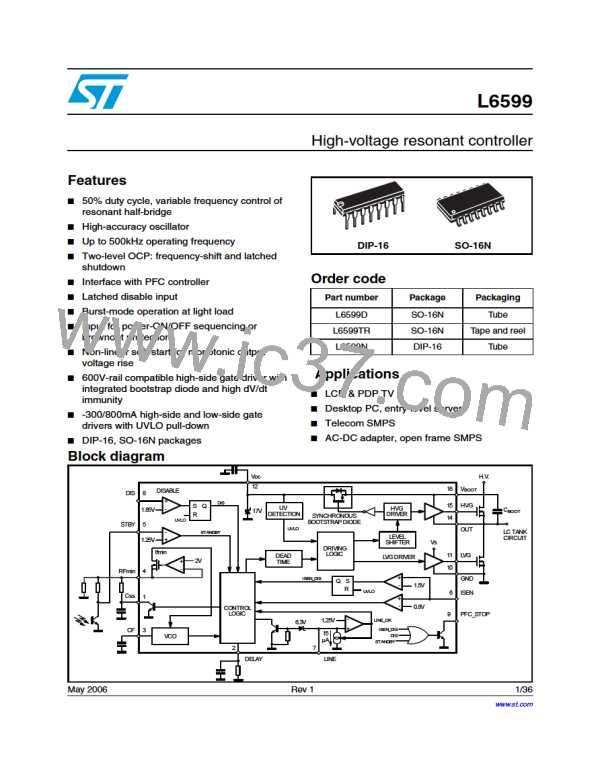Application information
L6599
This concern applies to converters designed with a high resonance frequency (indicatively,
> 150 kHz), so that they run at high frequency also at full load. Otherwise, the converter will
run at high frequency only at light load, where the current flowing in the MOSFETs of the
half-bridge leg is lower, so that, generally, an r
rise is not an issue. However, it is wise
(DS)ON
to check this point anyway and the following equation is useful to compute the drop on the
bootstrap driver:
Qg
--------------------
R(DS)ON + VF
V
Drop= I
r
Charge (DS)ON + VF=
TCharge
where Q is the gate charge of the external power MOS, r
is the on-resistance of the
g
(DS)ON
bootstrap DMOS (150 , typ.) and T
is the ON-time of the bootstrap driver, which
charge
equals about half the switching period minus the dead time T . For example, using a
D
MOSFET with a total gate charge of 30nC, the drop on the bootstrap driver is about 3V at a
switching frequency of 200kHz:
30 ⋅ 10–9
------------------------------------------------------------
150 + 0.6= 2.7V
VDrop
=
2.5 ⋅ 10–6 – 0.3 ⋅ 10–6
If a significant drop on the bootstrap driver is an issue, an external ultra-fast diode can be
used, thus saving the drop on the r of the internal DMOS.
(DS)ON
30/36

 STMICROELECTRONICS [ ST ]
STMICROELECTRONICS [ ST ]